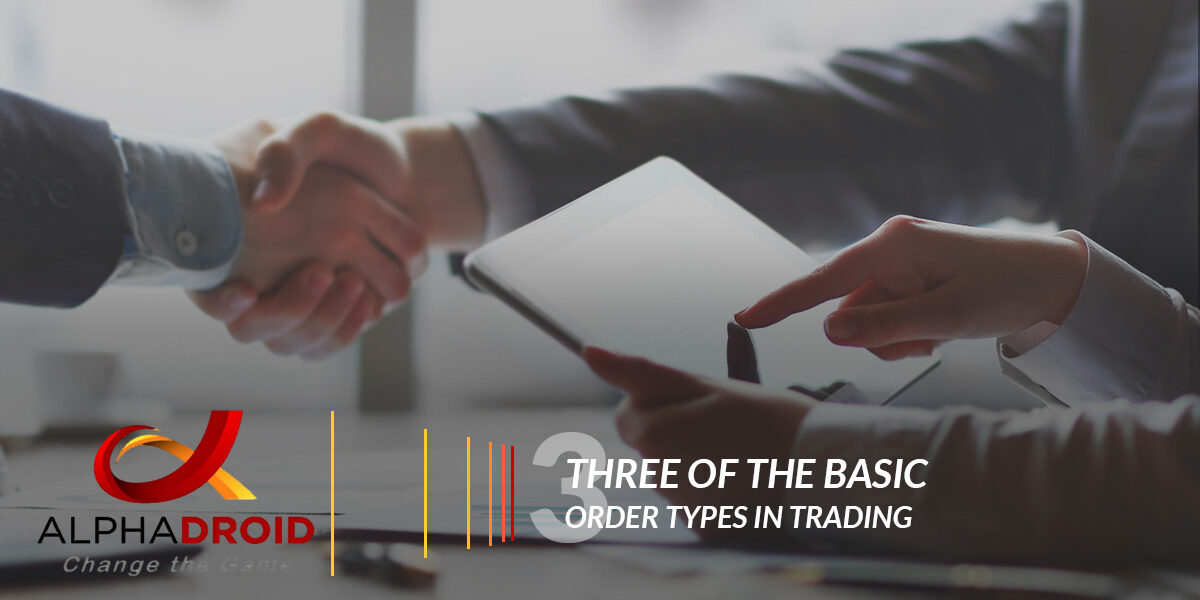Three of the Basic Order Types in Trading

Orders are the core of electronic trading. An order is an investor’s instructions to a broker or brokerage firm to buy or sell a security. Orders are typically done electronically. There are different types of available orders which allow investors to set restrictions that affect the time and price at which the order can be executed. These specific instructions have a significant effect on investors profits or losses on a transaction and, in some case, whether or not an order is executed at all.
With this in mind, it is essential that investors and traders understand various order types when it comes to electronic trading. In this article, we are going to review the function and significance of three of the most basic order types: Limit Orders, Stop-Market Orders, and Stop-Limit Orders.
Limit Order
A limit order is an order that is placed with a broker or brokerage firm to execute a buy or sell transaction at a set number of shares and at a specified limit price or better. A buy limit order can be executed only at or below the limit price, while a sell limit order can be executed only at or above the limit price. This means that investors are guaranteed to get their limit price or a better price if their order is executed. However, there is the risk that their order may not be executed at all. Some limit orders include a time limit within which the trade must be placed at the specified price. These specific orders typically tend to have higher execution costs than market orders. Both types of limit orders are used for both entering and exiting trades. For instance, an investor can buy into a market when their buy-limit order is hit and use a sell-limit order when the price reaches a predetermined level.
Stop Market Order
Like limit orders, stop-market orders are executed when a defined price is hit by the market. When this stop price is reached, the order automatically turns into a market order and is executed as soon as possible at the current market price. The difference between the two is that with stop market orders, any buy-stop orders are placed above the market price and sell-stop orders are placed below the market price, opposite of limit orders. Generally, sell-stop orders can be used to limit a loss or protect profit position in case the stock’s price fluctuates. Lastly, stop-market orders can also be used to enter a trade if a specific price level is breached, known as a breakout trade. It’s important to understand that stop-market orders become market orders once the stop price is fulfilled by the market, which can increase risk.
Stop-Limit Orders
A stop-limit order is a conditional trade over a set period of time that combines the features of a stop trade with those of a limit order. These unique orders are most commonly used to mitigate risk. The stop-limit order will be executed at a specified price, or better, after a given stop price has been reached. Once the stop price is attained, the stop-limit order turns into a limit order to buy or sell at the limit price or better. Stop-limit orders provide traders and investors with greater control over order entry, but due to a limit value involved, there is a risk of orders not being executed because it will be treated as a limit order once stop price is reached.
Hopefully, having a better understanding of these three basic order types will help traders have more success with investing.
 AlphaDroid’s award-winning investment portfolio management software provides traders and investors with a variety of options for order entry. Ready to try AlphaDroid yourself? Begin your free trial today!
AlphaDroid’s award-winning investment portfolio management software provides traders and investors with a variety of options for order entry. Ready to try AlphaDroid yourself? Begin your free trial today!
